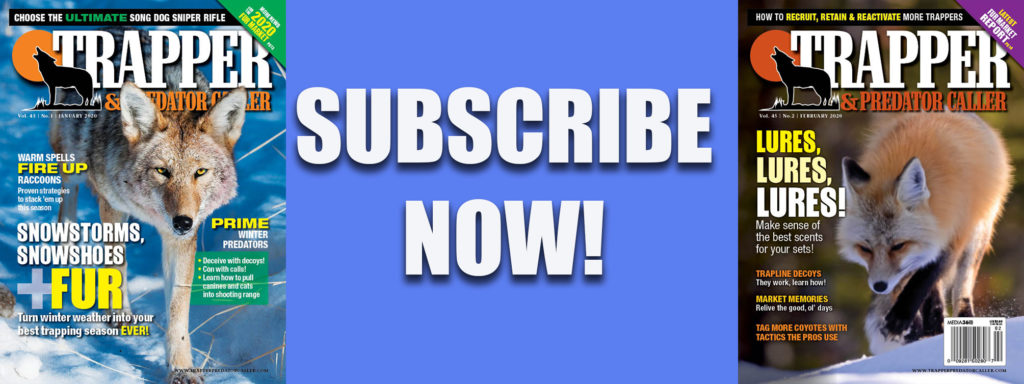November is prime time for trapping, and by now everyone is out laying steel or checking traps! The crisp air, the early morning frost on the grass, the fresh smell of dirt and mud as we dig those dirtholes or pocket sets, all contribute to the overall experience. If you have traps out now, you have made the decision to trap because you are a trapper — and you will enjoy it — rain or shine.
Of course, the market is dim for all but coyotes, and unless this is your first year trapping, you know that by now. My view of the world is based on more than 40 years of selling skins as a trapper myself, and seeing exceptional years (the last one being 2013), and some really bad ones (2015-present). When I say bad — you have to put things in perspective.

Trapper & Predator Caller fur market expert Serge Lariviére.
When anything sells at less than long-term averages, I call that bad. Beavers at less than $15, good quality Northern raccoons at less than $10, red foxes around $15 (if they sell), fishers at $40 to $50, muskrats in the $2 to $3 range, wild mink at $5, martens below $40, river otters below $20 (if they sell), and no real markets for “unwanted” by-catch such as squirrels, opossums, skunks or weasels.
But yes, coyotes rock and every good coyote that is pale and prime is at least a one-hundred dollar bill in American money. Coyotes continue to dominate the trade, and many industry leaders are surprised at how long this fashion trend has gone. Every year, people say the end is coming to the coyote craze, yet every year prices remain strong and everything sells like hot cakes. Western coyotes dominate, but even Eastern coyotes bring good money, as do odd colors such as red coyotes. I think a lot of Eastern wolf trappers would get more money for their skins if they could call those reddish wolves “coyotes.”
The enthusiasm for coyotes may be the lifeline of the wild fur trade right now, as everything else seems to dwindle. The entire ranch mink industry is shrinking faster than we thought possible, and many ranchers are pelting out and closing their farms, or thinking about it. Worldwide, the number of ranch mink is plummeting and some say that the recovery of the wild fur trade will only start when the ranch mink supply drops to the bottom. Honestly, I thought we hit bottom three years ago, but every year we seem to drop a little more and things get worse, if that is possible. Bad prices are bad — but when some items start to not sell at all, then you know things are worse.
These past seasons, entire lots of river otter, red fox and wild mink skins were unsold at some of the major international auctions. Not all of these skins are junk, but in tough times, buyers have less money to gamble with, and bidding on coyotes is much safer than bidding on foxes.
North American Fur Auctions held a clearance sale in August 2019, but because most skins were “unsold skins” from previous auctions, no averages were provided on the company’s website. Trappers who had skins sold there felt that “a little is better than nothing,” but whatever prices were paid did little to stimulate enthusiasm for the upcoming fur season. Well, at least from a price standpoint.
Which brings me to my last point: having fun trapping. Good pelts still sell, and this year, there is no rush to get started to beat the competition, because the competition will likely be very weak. In my area of southern Quebec, I have never seen more roadkilled raccoons all over the countryside, and I hear more reports of hunters seeing more fishers than ever before. Every farmer still complains about coyotes (yes, the $100 coyotes), so that is a good way to get permission. Some hardcore longliners will say that there is no better time to secure long-term permissions than when no one else is asking permission, so don’t be shy to ask.
Another positive is that lower fur prices remove the incentive to rush, rush and rush to the next set. Maybe this is a good time to take a friend along as you run the line, or take the neighbor’s kids, or a colleague from work. Introducing someone new to trapping takes time and slows you down. But this year, what’s the rush?
For me, this year will be about trying a new area, and starting serious fur-catching business later, when fur is more prime. After all, I have to practice what I preach: enjoy the show, and start later. And for sure, I will be out there again this year, I have no expectations of a profit, but big plans to try new sets, new areas, and slow down enough to take pictures so that I can write about my adventures if some of them work out! Whether they do or not, one thing is for sure — I will have fun trapping, and I wish you the same for the upcoming season!

